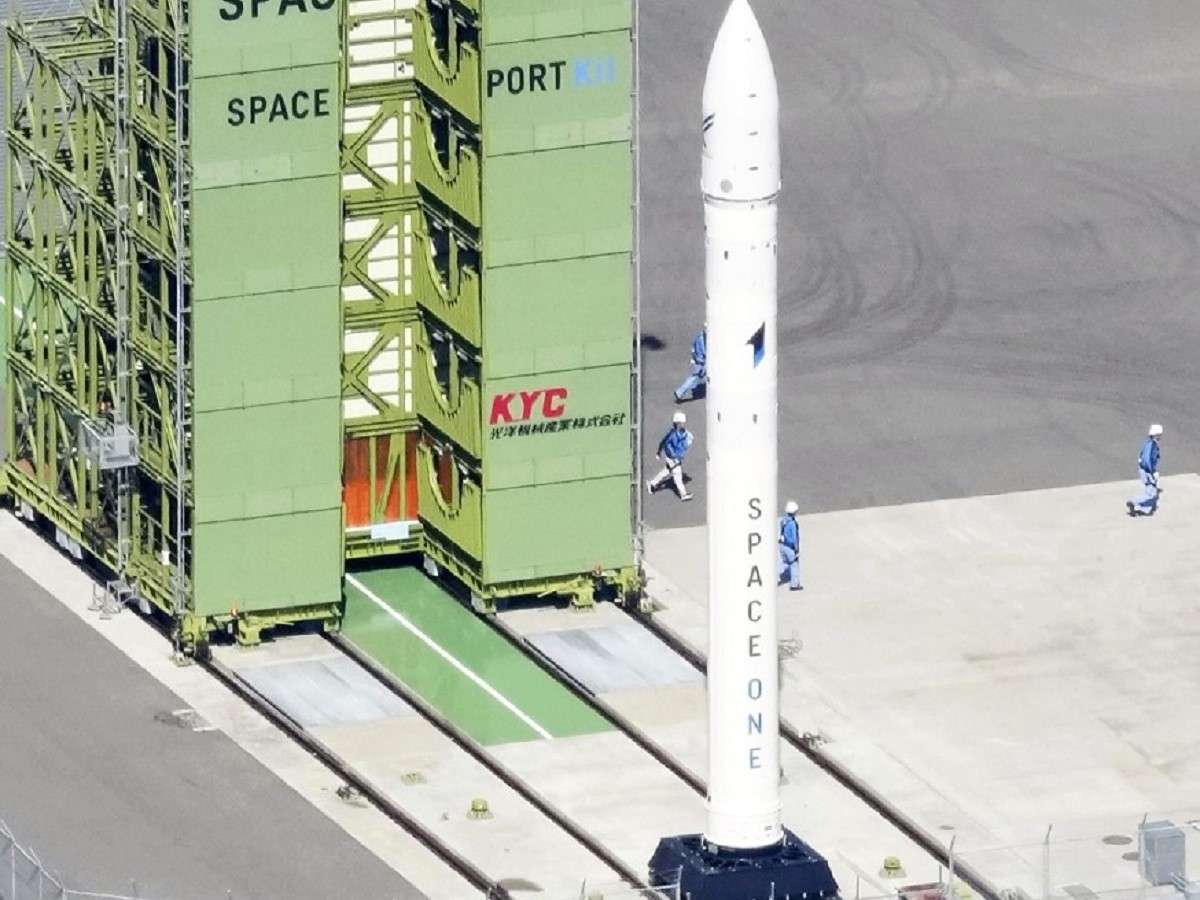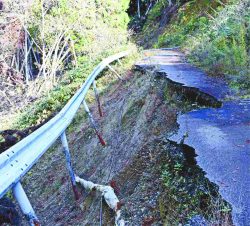Japan’s Kairos Rocket Explodes Immediately after Launch; Rocket’s Developer Vows to Press On (UPDATE 3)

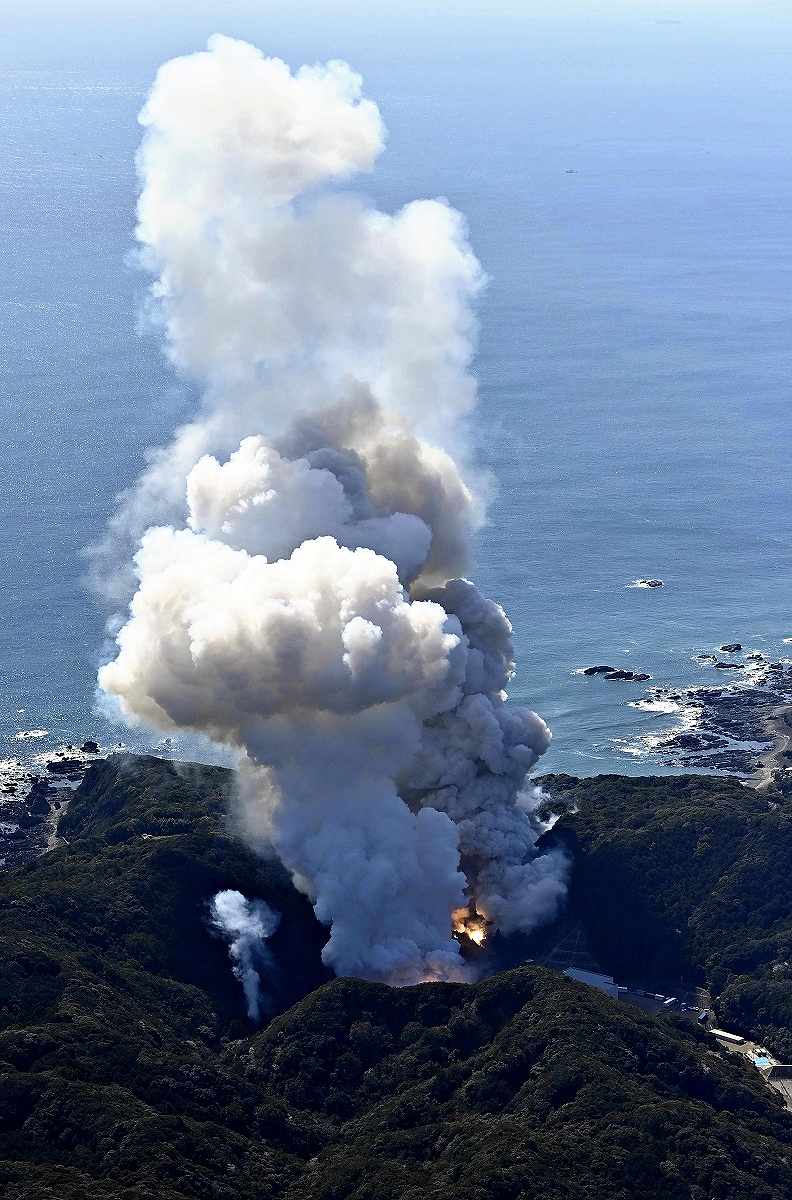
The KAIROS rocket explodes in Kushimoto, Wakayama Prefecture at 11:01-11:02 a.m. on Wednesday.
11:14 JST, March 13, 2024 (updated at 17:00 JST)
The first Kairos rocket, developed by Space One Co., blew up a few seconds after launch in Kushimoto, Wakayama Prefecture, shortly after 11 a.m. on Wednesday.
“The launch has been terminated,” the Tokyo-based space startup announced after the launch failure. “We’re currently investigating the details.”
At a press conference on Wednesday afternoon, an official for Space One said the Kairos rocket self-destructed autonomously about five seconds after launch with the engine ignited after some kind of anomaly was detected in the rocket body.
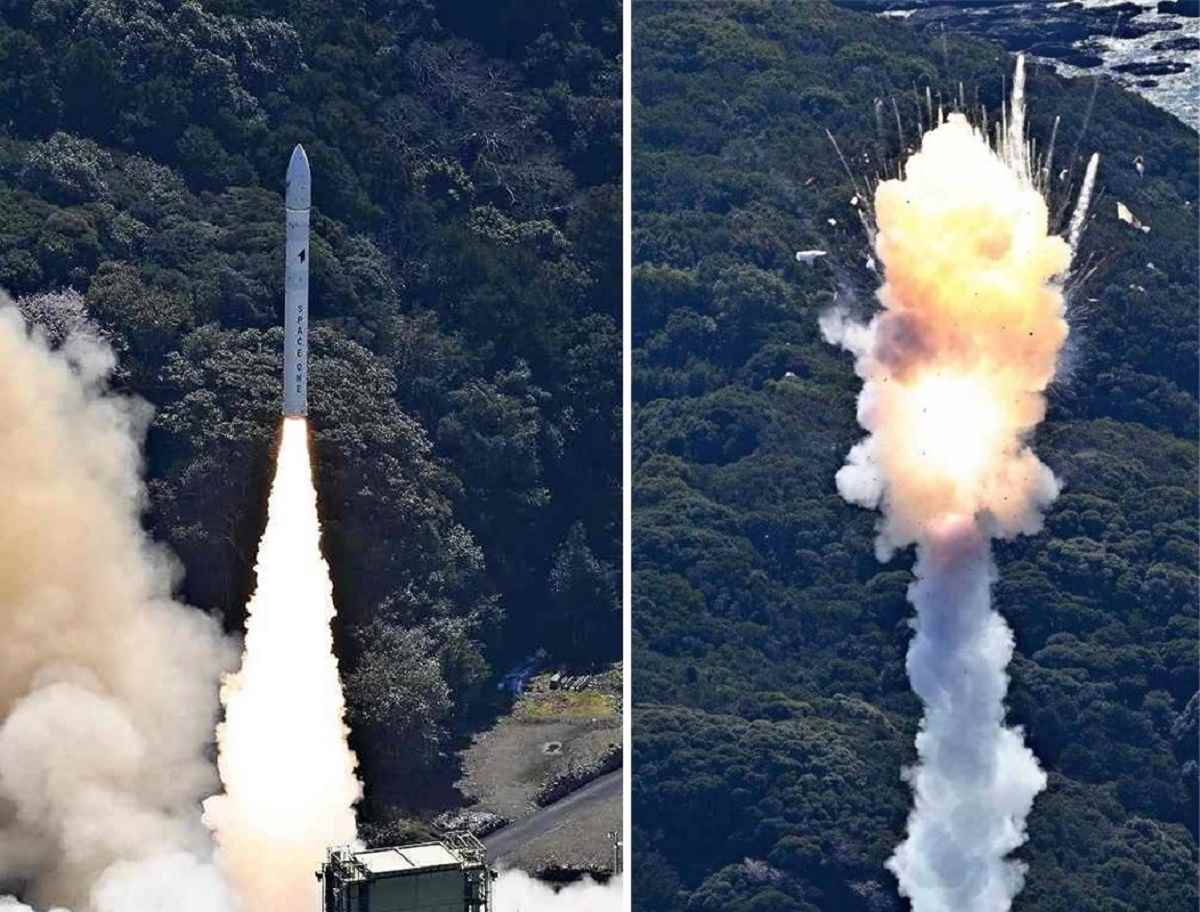
Left: The KAIROS rocket is launched at Kushimoto, Wakayama Prefecture, at 11:01 a.m. on Wednesday.
Right: The KAIROS rocket explodes in Kushimoto, Wakayama Prefecture at 11:02 a.m. on Wednesday.
“We deeply apologize for not meeting people’s expectations,” said Space One President Masakazu Toyoda at the press conference at a hotel in Wakayama Prefecture. “We’ll investigate the cause and take on the next challenge. We have no intention of giving up.”
Toyoda said the company will establish a task force he will head to investigate the cause of the problem and prevent a similar incident.
The 18-meter-tall rocket burns solid fuel for propulsion and was carrying a small satellite for the Cabinet Satellite Intelligence Center. If it had succeeded in sending the satellite into orbit, it would have been a first for a rocket developed independently by a private Japanese company. The satellite was meant to separate from the rocket about 50 minutes after liftoff, and the satellite was to orbit an altitude of about 500 kilometers.
According to the company, controls for the Kairos rocket are automated, and the rocket can self-destruct automatically in the event of an anomaly.
The rocket’s launch was initially scheduled for March 9 but was cancelled due to a ship being in a restricted maritime area near the launch site. This time, Space One increased the number of vessels conducting surveillance in the vicinity to prevent ships from approaching the restricted area.
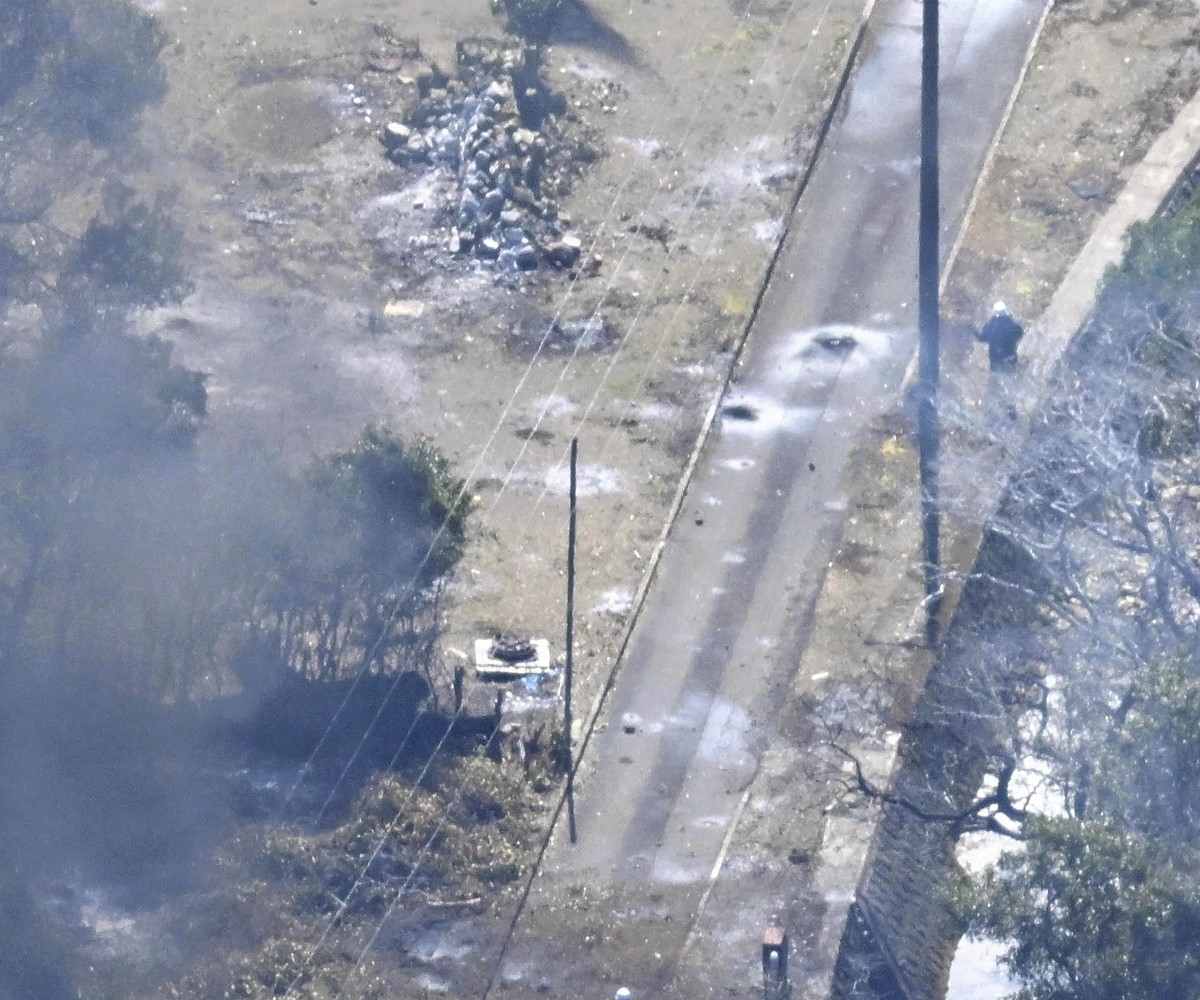
What is believed to be part of the destroyed Kairos rocket is seen in Kushimoto, Wakayama Prefecture, at 11:28 a.m. on Wednesday.
Space One was founded in 2018 with investments from IHI Aerospace Co., Shimizu Corp., Canon Electronics Inc. and the Development Bank of Japan.
IHI Aerospace was involved in the development of the 25-meter-long Epsilon, a small solid-fuel rocket, and this technology was also used for the development of the Kairos rocket.
Space One aims to offer a “space delivery service” that makes frequent trips to send small satellites into space, in accordance with customer requests. It has set a target of launching 20 rockets per year in the late 2020s and 30 per year in the 2030s.
In 2022, the company established a launch site, Space Port Kii, in Kushimoto, the southernmost town on the island of Honshu.
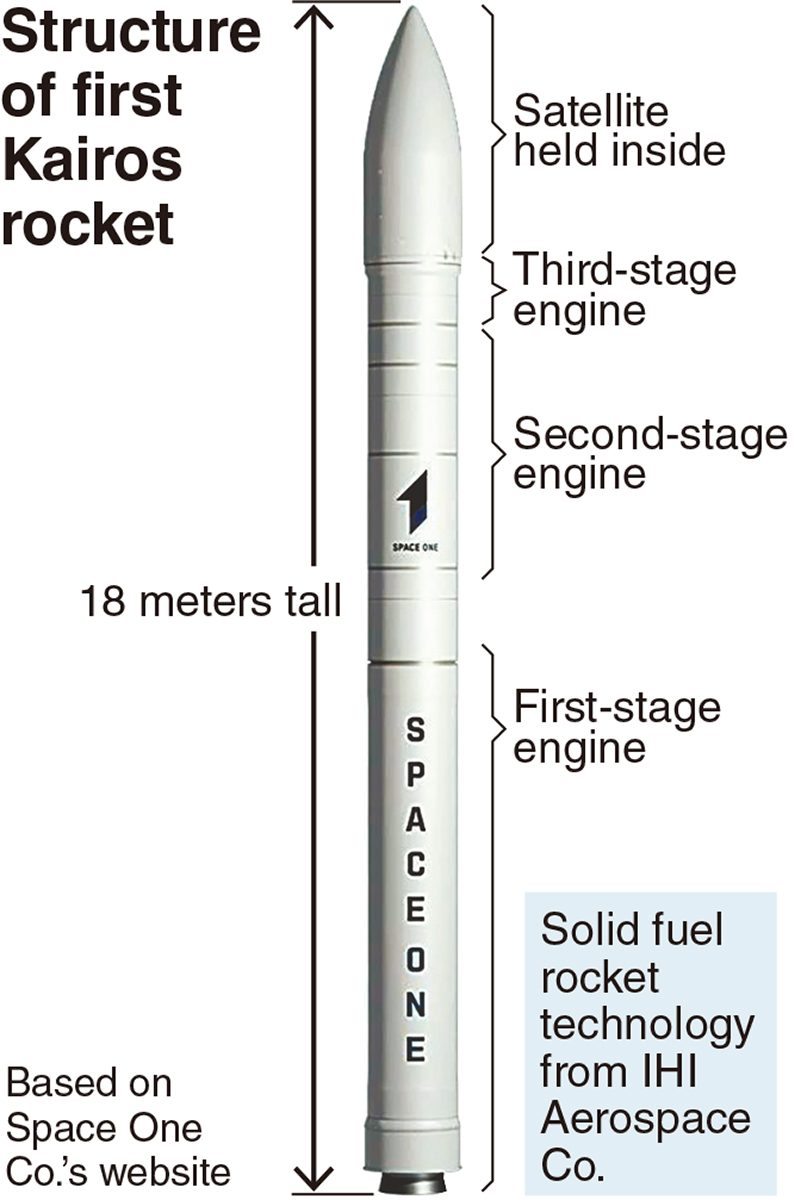
Satellite launches in Japan have been led by the Japan Aerospace Exploration Agency and other government bodies. In 2007, space startup Interstellar Technologies Inc. in Taiki, Hokkaido, became the first private company in Japan to send a small rocket into space — reaching an altitude of 100 kilometers or more — but it was not carrying a satellite.
Movie
"Society" POPULAR ARTICLE
-

M4.9 Earthquake Hits Tokyo, Neighboring Prefectures
-

Israeli Tourists Refused Accommodation at Hotel in Japan’s Nagano Pref., Prompting Protest by Israeli Embassy and Probe by Prefecture
-

M7.5 Earthquake Hits Northern Japan; Tsunami Waves Observed in Hokkaido, Aomori and Iwate Prefectures
-

Tsukiji Market Urges Tourists to Avoid Visiting in Year-End
-

M5.7 Earthquake Hits Japan’s Kumamoto Pref., Measuring Upper 5 Intensity, No Tsunami Expected
JN ACCESS RANKING
-

Keidanren Chairman Yoshinobu Tsutsui Visits Kashiwazaki-Kariwa Nuclear Power Plant; Inspects New Emergency Safety System
-

Tokyo Economic Security Forum to Hold Inaugural Meeting Amid Tense Global Environment
-

Imports of Rare Earths from China Facing Delays, May Be Caused by Deterioration of Japan-China Relations
-

University of Tokyo Professor Discusses Japanese Economic Security in Interview Ahead of Forum
-

Japan Pulls out of Vietnam Nuclear Project, Complicating Hanoi’s Power Plans

